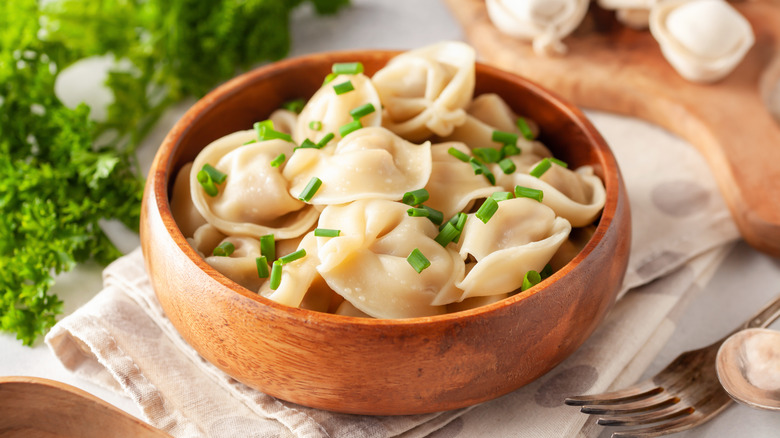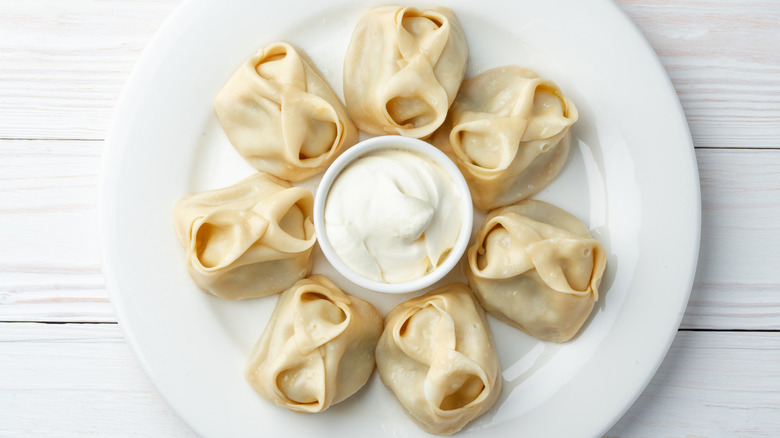2 Simple Ways Russian Pelmeni Are Commonly Served
Dumplings are the perfect food. Disagree? Just consult the multitude of countries around the world that have created their own versions of dumplings. There are Chinese bao and Jewish knishes. You can bite into a pasty in the U.K. or a warm samosa in India. Italian ravioli and Spanish empanadas are dumplings. When you think of traditional Russian cuisine, dishes like borscht or stroganoff might come to mind. But if you aren't thinking about dumplings when you think of Russian food, it's time to think again.
Introducing Russian pelmeni: the dumplings straight out of your comfort food dreams. They have an endearing rounded semi-circle shape that's almost tortellini-like but bigger and fuller. (Per The Spruce Eats, the word "pelmeni" roughly translates to the Russian equivalent of "ears" in honor of the dumplings' shape.) According to the travel guide TripSavvy, pelmeni is lauded as the national dish of Russia. Pelmeni is typically filled with ground beef and pork, but lamb is sometimes also used. Vegetarian versions have also evolved with sauerkraut and mushroom fillings. Apart from a killer filling, all good dumplings need a good serving method. Polish pierogis are served with green peppers and onions. Japanese gyoza is served with black vinegar. But, Russian pelmeni is commonly served in two different ways.
Enjoy pelmeni swimming or slathered
According to TripSavvy, pelmeni is traditionally either served with a big slab of butter and sour cream or swimming in homemade broth and black pepper. It's a warming, moist, filling bite. Notice the lack of parsley or fresh produce here — there's a reason for it. This staple Russian comfort food might have originally been created as a thrifty way to preserve meat during winter months, says The Kitchn. Before becoming a fundamental Russian dish, pelmeni was originally a Chinese food introduced to Siberia by Mongolian travelers.
Today, pelmeni are popularly made in big batches during wintertime — which, according to the local platform Russia Beyond, lasts for over nine months in some parts of the country. (As of 2021, the average annual temperature is five degrees Celsius.) Pelmeni is commonly frozen and cooked per serving later on. In fact, in Russia, the dumplings can simply be kept outside on a porch or balcony, and they'll stay frozen for months on end. Some folks even hold pelmeni-making parties where guests roll out the dough, grind the meat, and hand-shape the dumplings. Thanks to the advent of refrigeration, preservation, and the modern international food trade, today's home cooks can garnish your pelmeni with fresh produce for elevated plating if desired. Food Network suggests dill and chopped green onion; thyme could be a complementary fit, as well.

